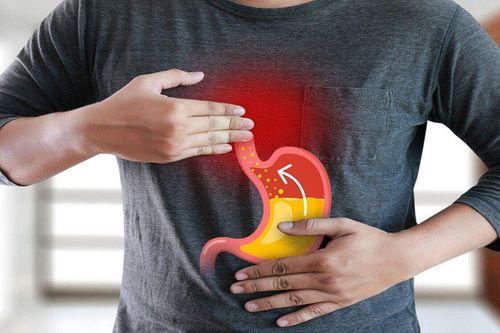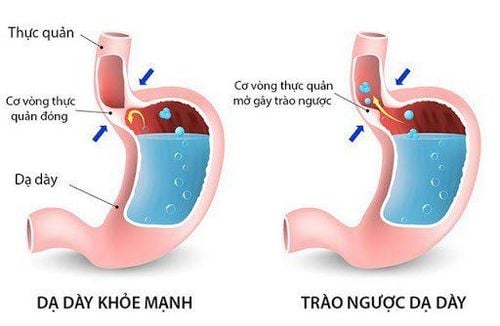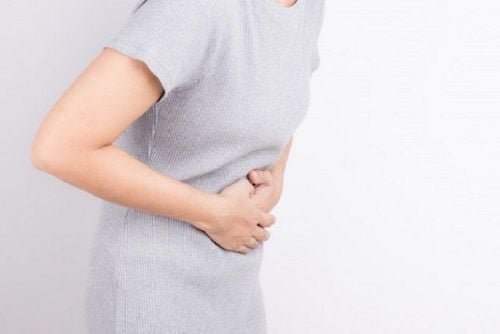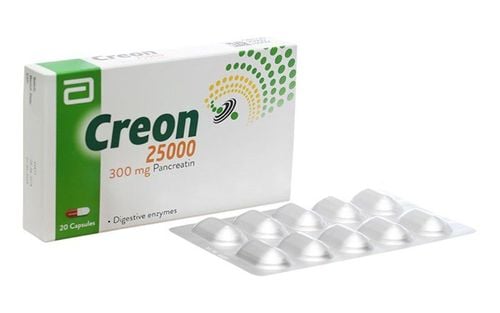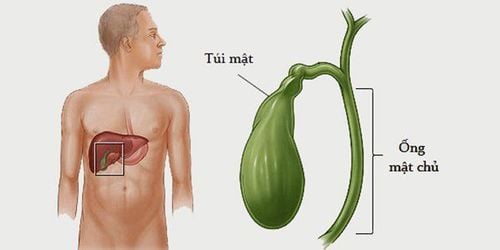This is an automatically translated article.
The article was professionally consulted by a doctor from the Department of Medical Examination & Internal Medicine - Vinmec Danang International General Hospital.Gastrointestinal bleeding is a serious complication of gastric pathology, causing bleeding in the stomach lining leading to vomiting blood, bloody stools. If not detected and treated promptly, it can lead to death.
1. Characteristics of bleeding from peptic ulcers
Upper gastrointestinal bleeding is gastrointestinal bleeding in the upper gastrointestinal tract, usually defined as bleeding originating from the esophagus, stomach, or duodenum. Blood may be observed in the vomit or in an altered form such as black stools. Bleeding from peptic ulcers accounts for 40-45% of all upper gastrointestinal bleeding. Despite many effective medications, bleeding from peptic ulcers is still one of the most common complications of peptic ulcer disease.Characteristic of bleeding due to peptic ulcer is common in patients over 50 years old, with a history of peptic ulcer for many years, repeated bleeding, often occurs after the patient takes anti-inflammatory drugs. Non-steroidal anti-inflammatory drugs such as: Aspirin, Voltaren...
1.1 Bleeding site usually comes from gastric ulcer, usually in small curvature, back of stomach, cardia, in gastric ulcer there is about 15 - 16% bleeding complications. The fibrous ulcers, the thick wall perforate the surrounding tissues and blood vessels in the stomach area, causing bleeding. Duodenal ulcer, more common than gastric ulcer, lesions are mainly found in the duodenal bulb, more rarely in the duodenal segments, ulcers are often in the posterior, superior, and anterior surfaces, there are fibrous ulcers. cause deformity of the duodenal bulb, deep into the duodenal wall causing bleeding, about a quarter of duodenal ulcer cases have bleeding complications. Bleeding from the gastric mucosa, with or without ulcerative lesions, due to an acute inflammatory process or after ingestion of non-steroidal anti-inflammatory drugs, or corticosteroids, causing erosive ulcers, this type of bleeding may be in a few spots, or the entire gastric mucosa.
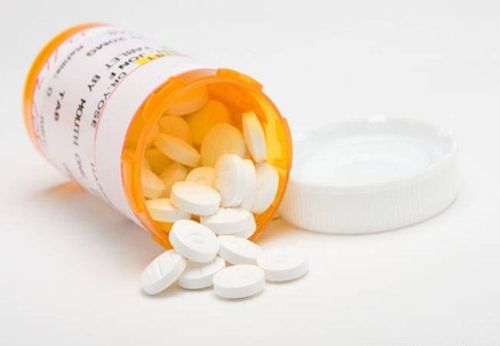
Các loại thuốc kháng viêm có thể khiến niêm mạc dạ dày bị trợt loét
1.2.1 Ulcers that eat into the blood vessels These are ulcers located near the large arteries of the stomach - duodenum such as small curvilinear ulcers, the posterior surface of the stomach, the places near the pyloric artery, the splenic artery, the ulcer on the upper border, the lower border and the back of the duodenum near the gastroduodenal artery ...
These ulcers when bleeding complications often occur violently, when emergency endoscopy can see blood vessels are flowing.
1.2.2 Bleeding from the vessels of the base of the ulcer Because the ulcer burrows into the stomach or duodenal wall, damaging the blood vessels, the bleeding nature of these lesions is not intense and often recurs many times .
Temporarily stable times are due to treatment, when endoscopy can show that the ulcer has stopped bleeding at the bottom of the ulcer can see the tip of the vascular segment.
1.2.3 Bleeding at the edge of the ulcer Due to the progression of the ulcer, the mucosal margin of the ulcer is inflamed and oozing with blood, the bleeding nature of these lesions is usually small, persistent, can stop on its own, when endoscopic The ulcer margins can be seen to be swollen, dark red and bleeding.
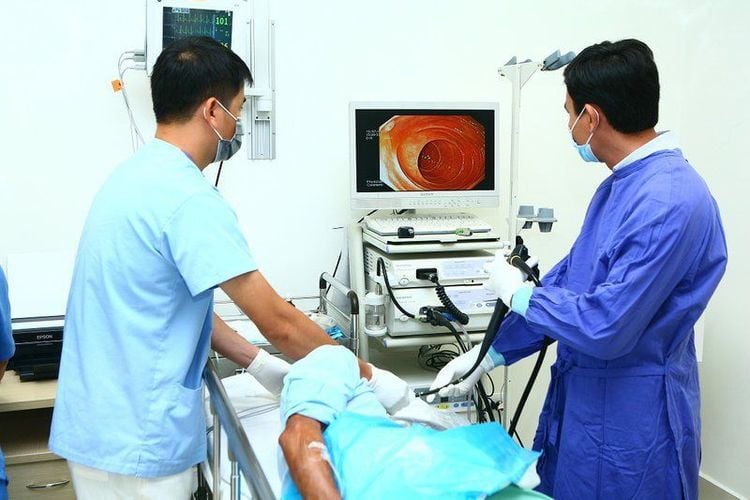
Các tổn thương do chảy máu dạ dày đều có thể quan sát bằng phương pháp nội soi
2. Symptoms of bleeding from stomach ulcers
Patients with bleeding due to peptic ulcer have symptoms such as:Nausea and vomiting blood, Abdominal pain but rarely severe pain, Black stools appear immediately after vomiting blood, stools are viscous, black shiny like tar, or like coffee grounds, stench, The patient feels dizzy, dizzy, or faints after vomiting blood, sometimes in shock due to blood loss, pale skin, sweating, feeling of buzzing and buzzing in the ears, thirst.
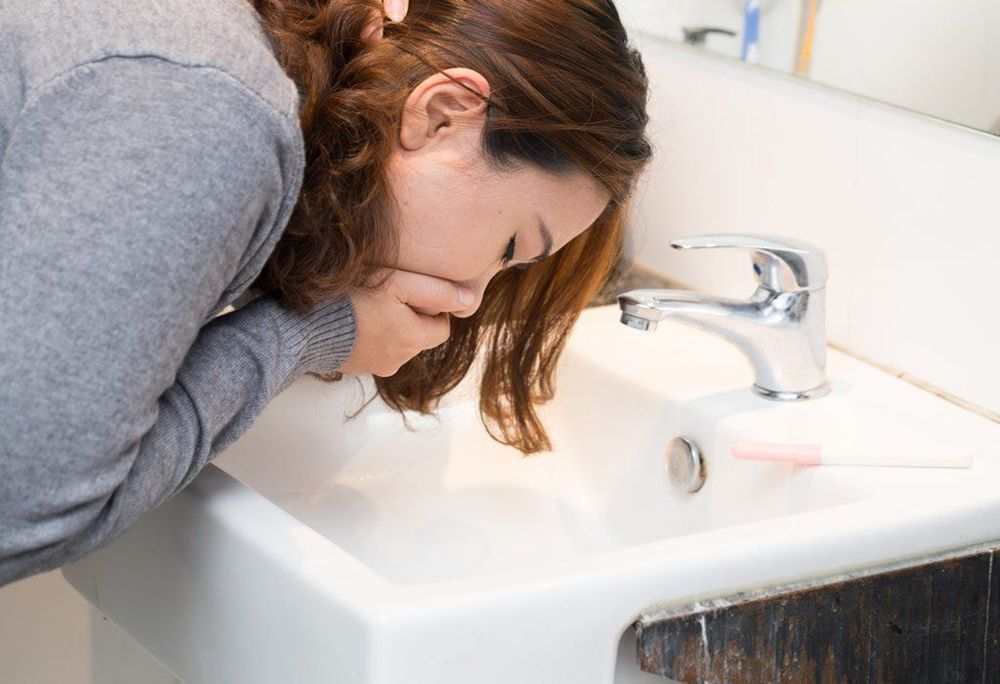
Bệnh nhân có dấu hiệu buồn nôn hoặc nôn ra máu
3. Diagnostic test for bleeding from stomach ulcers
Endoscopy: As the most important diagnostic tool, thanks to endoscopy to accurately determine the cause and location of bleeding, and through endoscopy, bleeding can be controlled by sclerotherapy, or electrocautery, laser. ., can perform emergency endoscopy during the first 24 - 72 hours. Abdominal X-ray: Find signs of intestinal paralysis Tests: Blood count, Hct, coagulation, Prothrombin ratio, platelets... to assess the degree of color loss. Ultrasound: Finding other pathological signs in the abdomen such as hepatitis, cirrhosis, obstructive jaundice, in some cases of unclear bleeding due to peptic ulcer, ultrasound has the purpose of diagnosis. distinguish.Please dial HOTLINE for more information or register for an appointment HERE. Download MyVinmec app to make appointments faster and to manage your bookings easily.




